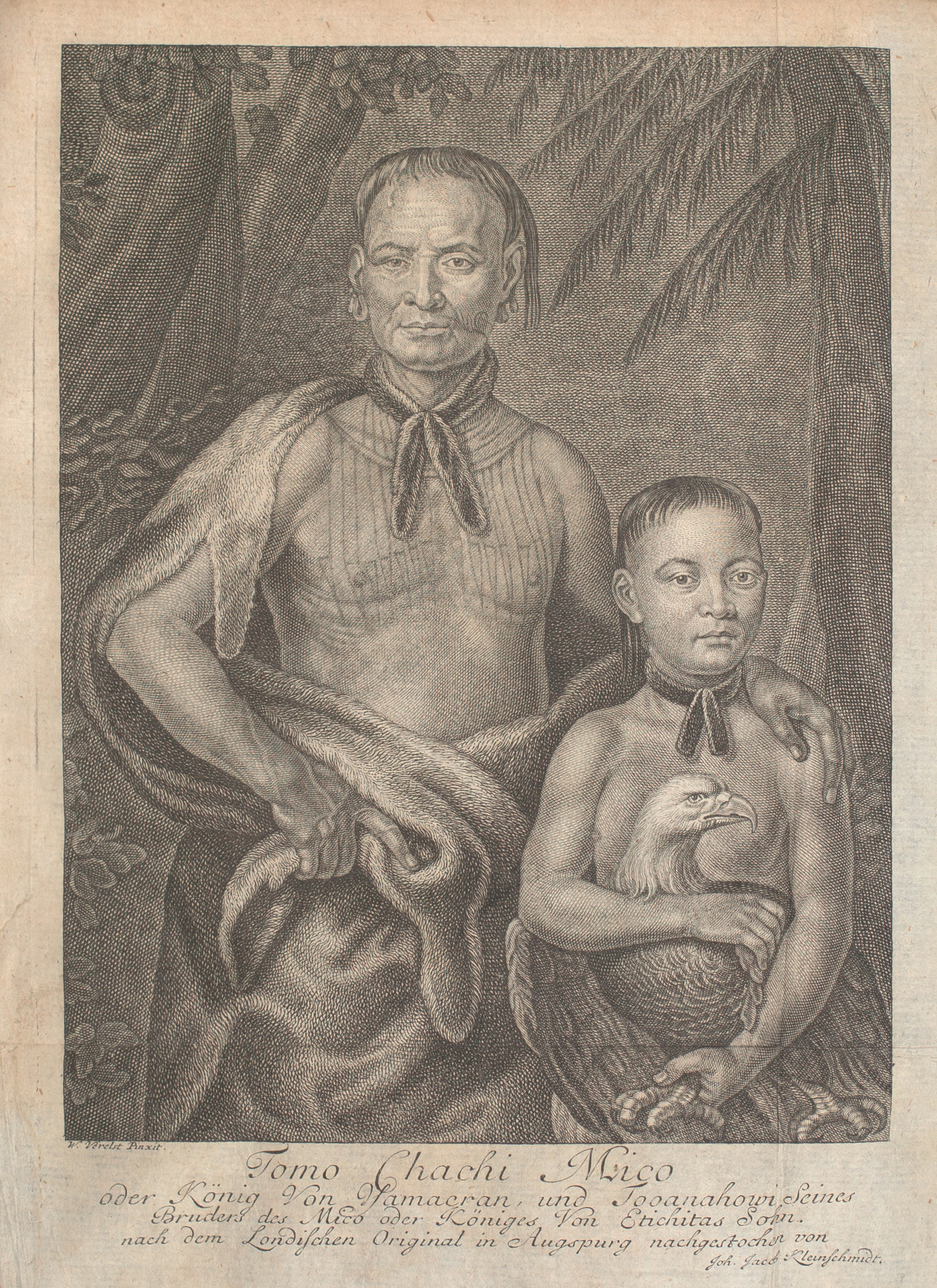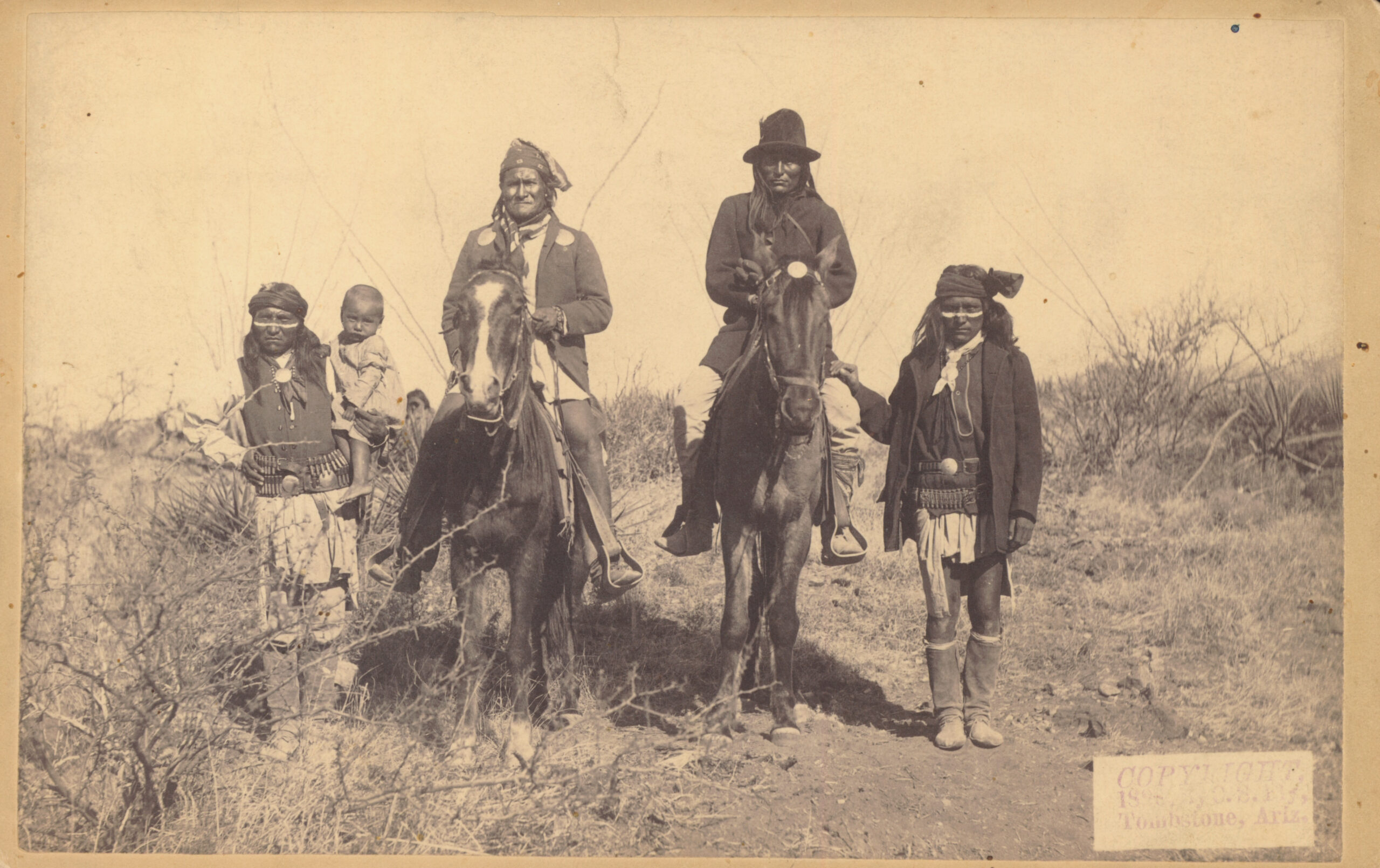Pair 6: Leadership and Resistance
Contents
Building on a Century of Collecting at the Clements Library
Pair 2: The Power of the Unseen
Pair 4: From the Big Picture to Individual Lives
Pair 5: Picturing African-American Identity
Pair 6: Leadership and Resistance
Pair 7: The Grid, Large and Small
Pair 8: Records of Self-Liberation
Pair 9: Death of Wolfe/Children’s book
Pair 10: Thomas Gage, from the Reading Room to the Digital World
Pair 11: Colonialism and Conversion
Pair 12: Documenting Disability
Pair 14: One Nation, Under a Grid
Pair 15: Judging Books by their Cover
Pair 16: Women Writers and Intellectuals
Pair 17: The Minds of Children
Pair 19: Sex and Gender in the Public Sphere
Pair 21: Organizing the Natural World
Pair 22: Collective Memories of Abraham Lincoln
Related Resources
Pair 6: Leadership and Resistance

Tomo Chachi Mico or King of Yamacraw, and Tooanahowi his Nephew, Son to the Mico of the Etchitas.
London: John Faber the Younger (c. 1695–1756) after William Verelst, circa 1734
Historical Native American visual culture did not include self-representation in a form comparable to the Anglo-European portrait tradition. The well-known portraits of notable Native Americans like Yamacraw-Creek leader Tomochichi (1644-1741) and Chiricahua Apache leader Geronimo (1829-1909) may say more about non-indigenous perspectives than Indigenous self-representation.
This engraving of Yamacraw-Creek Native Tomochichi was created to illustrate Johann Jacob Kleinschmidt’s Der Ausführlichen Nachrichten von der Königlich-Grossbritannischen Colonie Saltzburgischer Emigranten in America to honor Tomochichi’s willing engagement with English colonizers in Georgia. Tomochichi created a sensation when he traveled to England with colonist James Oglethorpe where he was presented to King George II and the sponsors of the new Georgia colony of Savannah. Tomochichi appears with his nephew in the image from artist William Verelst.

Geronimo and Natches mounted, Natches with hat on; son of Geronimo standing by his side. : This group was taken by special request of Geronimo.
Tombstone, Arizona: Camillus Sidney Fly (1849-1901), 1886
Albumen print photograph on printed mount
Richard Pohrt, Jr. Collection of Native American Photography
In contrast, an entirely different relationship to colonization appears in a series of carefully staged photographs taken in the Sierra Madre mountains of Mexico under perilous circumstances. Arizona photographer Camillus S. Fly’s images of Chiricahua Apache leader Geronimo, known to his people as Goyakla or “One Who Yawns,” represent a militant autonomous community, openly hostile to colonization and the United States. Yet Geronimo apparently had a shrewd understanding of the power of White men’s images and cooperated with photographer Fly. According to Fly’s account, the group appearing here was arranged by Geronimo himself. Geronimo likely became the most photographed Native American subject of the 19th Century.

